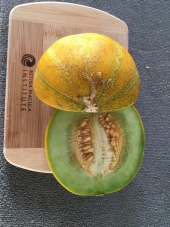I love this topic.
We had some bare spots in our small grassy area that we seeded with "Fleur de Lawn" (PT 755) this past spring, which contains a couple clovers, sweet alyssum, and yarrow among some other flowers/grasses. The strawberry clover and alyssum have come up in some areas, though no sign of yarrow as of yet.
We also planted a bunch of marigold in various places to help with aphids, though not sure if it has done anything.
The exciting thing for me was a volunteer/weed arrival of something in the carrot family (maybe queen anne's lace??) that has gotten pretty bushy in a couple spots. Today I counted six adult ladybugs on one of these plants, and later in the day I saw a juvenile. We love ladybugs.
We have also been seeing a lot of hoverflies, which I have heard are pollinators as adults. We have a lot of pollinators that visit our garden including european honey bees, an occasional bumble bee, hummingbirds, and lots of butterflies. I also recently read that hoverfly larvae eat aphids, so that's good.
I remember reading that we want to attract lacewings, though the only time I think I have seen a live adult green lacewing is at night when they almost fly right into me. I imagine the adult lacewings are the ones who like the umbrel flowers, and the juveniles predate on what we consider pests. I don't know a juvenile lacewing when/if I see one.
I have killed a few wasps trying to colonize on our house in the past, but Stefan Sobkowiak (and others) say we should gladly welcome wasps. Hopefully my two-year old son learned his lesson during the week in which he was stung five separate times by honeybees, most of which he had literally picked up in his hands from the flowers they were visiting. I think an angry mob of wasps could inflict more pain than a lone honeybee sting.
Lastly, I was at a friend's house recently who had a bunch of small preying mantids living in his backyard. He caught one and gave it to me to take home and release in our garden. Very unnatural, I know. What sort of plants might attract a friend for my new pet preying mantid??





